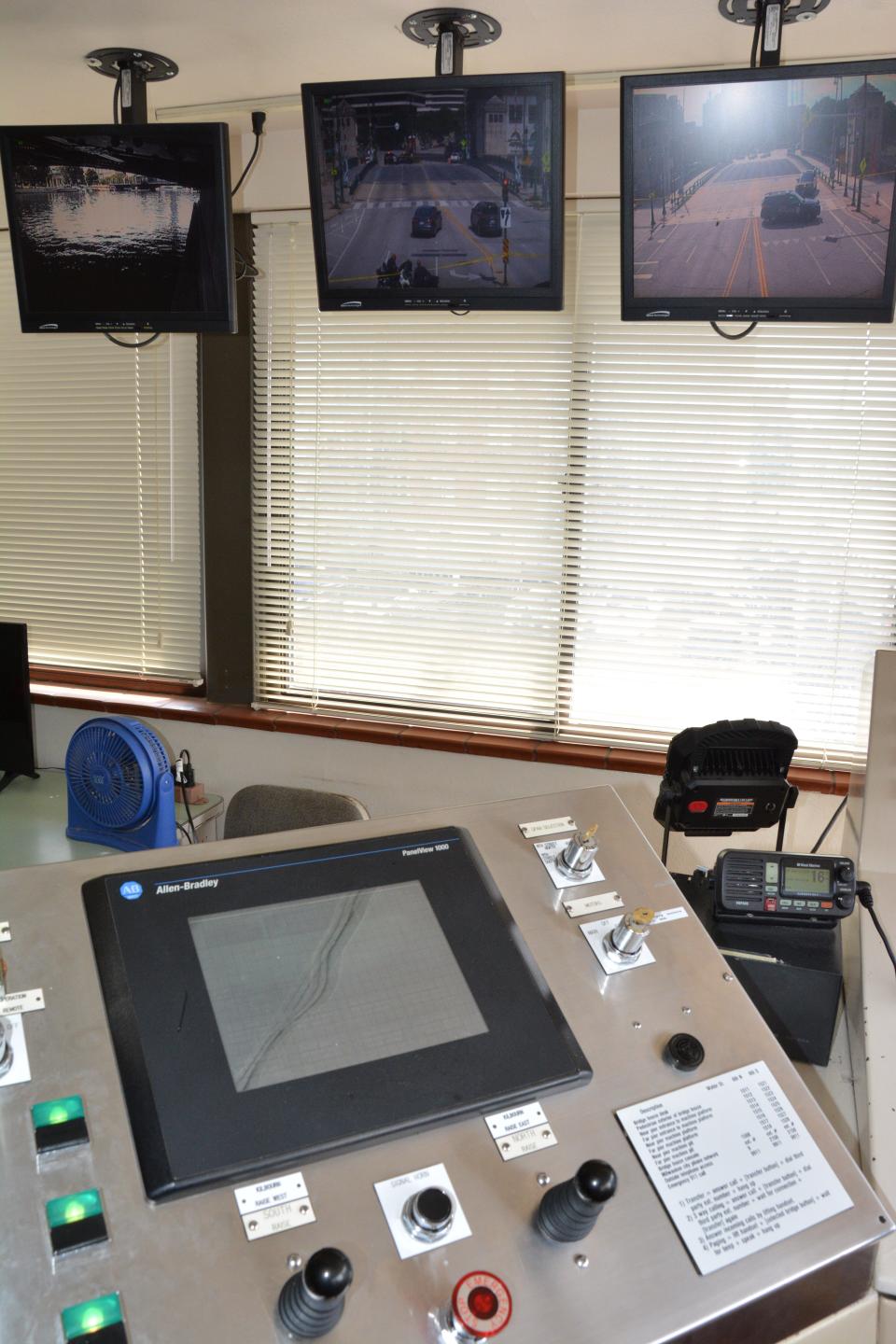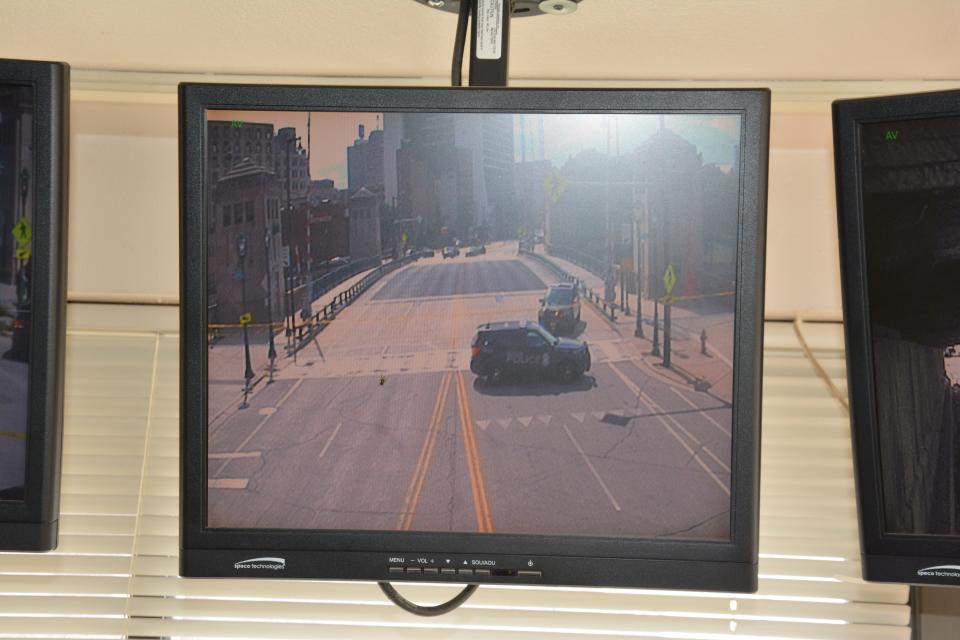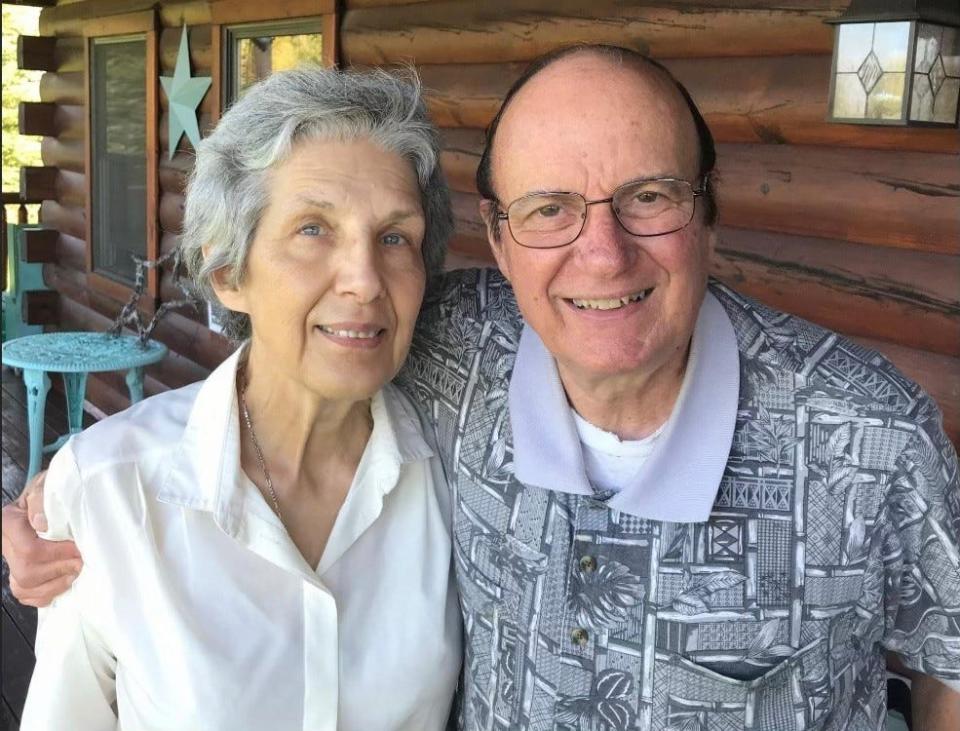What happened when a RI man fell off a Milwaukee bridge? Here's what the investigation says
Three bridge operators and a police detective investigating the August death of a Rhode Island man on the Kilbourn Avenue bridge as it opened for a boat to pass through underneath said it can be hard to see pedestrians via the city’s camera system.
The cameras’ angle and distance from the bridge, combined with any glares or shadows produced from the sun and the gray-colored walkway of the bridge can obscure the very thing operators are meant to look out for as they raise the bridge remotely: pedestrians.
That’s according to a Milwaukee Police Department report obtained by the Milwaukee Journal Sentinel through an open records request.

Remembering Richard Dujardin: Rhode Island man killed in fall from Milwaukee's Kilbourn Avenue Bridge remembered as an avid traveler, devoted father to 6 children
The details come as the Milwaukee County District Attorney’s Office announced Friday it would not file criminal charges against the bridge operator, citing a lack of evidence.
What happened on the drawbridge in Milwaukee?
Police interviewed the city employee operating the Kilbourn Avenue bridge that day, a 27-year-old with two years of experience on the job. He said he followed all safety precautions before raising the bridge from a control tower almost a mile away and never saw 77-year-old Richard Dujardin on the city’s live camera feed, which does not record its footage, according to the records.
The Journal Sentinel is not naming the operator because he has not been charged with a crime.
Milwaukee’s Department of Public Works declined to make interim Commissioner Jerrel Kruschke available for an interview, citing an open investigation. A request for information regarding the bridge operator’s work status and any new safety new precautions was not immediately returned.

Richard Dujardin was visiting Wisconsin
Dujardin was a longtime reporter for The Providence Journal covering religion. He was visiting Milwaukee with his wife for a conference and was walking with her downtown Aug. 15. As they approached the Kilbourn Avenue bridge from the west, neither of them realized the bridge could open from the center, their family has said.
More about Dujardin: Richard Dujardin wrote about faith in Rhode Island, and embraced it himself
Dujardin’s wife made it safely across while doing a fitness a routine, but Dujardin, who walked slowly and used a hearing aid, walked past the barricades shortly before they dropped and apparently did not notice the horn and alarm sounding to signal the bridge’s opening.
He grabbed on to a railing as it continued to raise, but eventually fell about 71 feet.
Jay Urban, an attorney representing Dujardin’s family, announced in September he planned to file a notice of claim against the city, a precursor to a likely lawsuit. In reaction to the police report, he said called for an independent review of the city’s bridge operations and said the public deserves to know everything about how it works.

“It is entirely clear that Mr. Dujardin had walked on to the Kilbourn bridge before the gates were lowered and before any bells or lights were activated,” Urban said in a statement. “Any properly designed monitoring system should have allowed the bridge operator to see any pedestrians and delay the bridge raising to prevent a tragedy like this.”
He said he was not surprised by the district attorney’s decision not to charge the operator, given “the criminal standards are far higher for reckless criminal conduct beyond a reasonable doubt.”
Pedestrians get harder to see as bridge opens, operators say
Of Milwaukee’s 20 movable bridges, 10 are operated remotely. The Kilbourn Avenue bridge is operated from a tower almost a mile away, near North Water and East Erie streets.
It is a bascule bridge, meaning it splits from the center as the two halves swing upward, balanced by a counterweight.
The Kilbourn Avenue bridge is outfitted with three cameras, the report said. One is underneath the platform, while the other two are pointed at the bridge from both ends.
The bridge operator working that day told police the steps to raise the bridge include activating bells and flashing lights first. The operator must then verify nobody is on the bridge before dropping the barricades, sounding two more blasts of a horn and raising the platform, the report said.
Police reviewed footage from a traffic camera stationed about a block to the west of the bridge showing Dujardin walking by the barricades before they dropped.
The footage showed, and witnesses described, how Dujardin apparently did not hear the alarm bells or the shouted warnings from those nearby, the report said. Dujardin appeared to make it two-thirds of the way to the bridge’s midpoint before it started to raise. A witness said he made it half of the way back before he started grabbing the railing.
The operator told police he didn’t realize anything was wrong until a police squad car with lights flashing appeared on his camera feed, the report said.
Police interviewed the operator’s supervisor and a second bridge operator with four years of experience. They said the camera angle and lighting conditions can impact visibility on the camera feeds.
They also said seeing pedestrians gets more difficult as the bridge is opening because the dark surface of the bridge’s walkway reduces any contrast with that of a pedestrian. Dujardin wore a dark blue suit at the time of the incident, the report said.
A police detective who inspected the live camera feed after the incident said he had difficulty seeing pedestrians unless a “zoom in” feature was turned on.
“I could see vehicles, but it was difficult to make out details,” the detective wrote in his report.
Public Works Department examining new safety precautions
During a city committee meeting in September, Kruschke said his department is considering a number of new safety precautions for opening and closing bridges, including new signage and cameras or bringing back the old model of on-site operations for all bridges.
He said some bridges have operated remotely for at least 25 years and their cameras have never recorded footage or audio out of storage concerns.
Ald. Robert Bauman, who represents the area of the bridge and is the chair of the city’s Public Works Committee, was surprised better cameras hadn’t already been installed.
“I would’ve started that process the next day,” Bauman said. “Why didn’t you? It’s a problem for the guilty and for the innocent. Video would prove you didn’t make a mistake versus proving you did. Now it’s all speculation and guesswork.”
Kruschke said the department was still studying the fiscal impact of returning to on-site, manual operations. Some bridges would need upgrades, such as the installation of a bathroom.
Five movable bridges in Milwaukee are staffed at least 16 hours a day, seven days a week. Four are staffed around the clock every day.
In 2021, the city recorded more than 27,700 openings at its movable bridges, up 19% from 2017, according to the Department of Public Works.
This is a developing story. Check back later for updates.
Contact Elliot Hughes at elliot.hughes@jrn.com or 414-704-8958. Follow him on Twitter @elliothughes12.
This article originally appeared on Milwaukee Journal Sentinel: Richard Dujardin death on Milwaukee bridge will not result in charges

